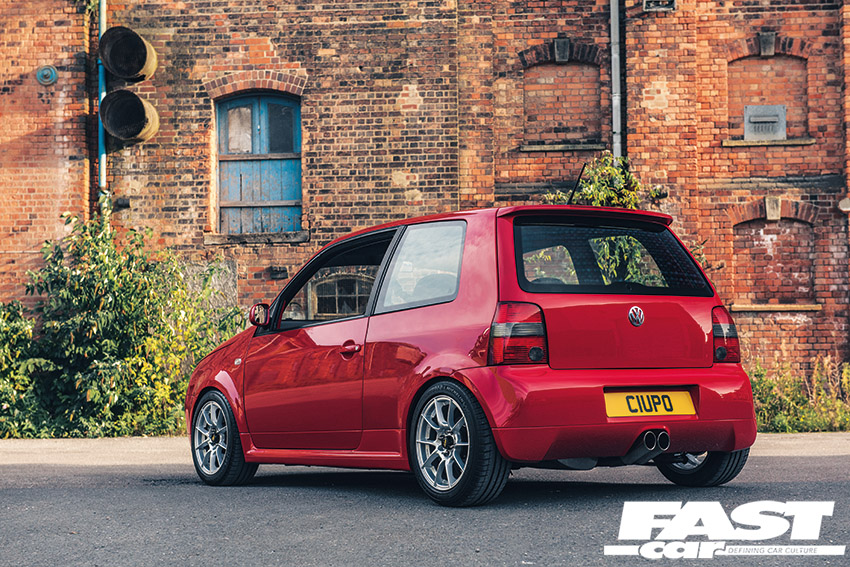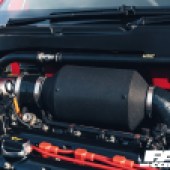While the latest hot hatches push ever further into supercar-worrying power figures, Clayton Jones’s meticulously track-honed modified VW Lupo GTI is a giant-felling advocate for sticking to the old-school formula.
Feature from Performance VW magazine. Words: Alex Grant. Photos: Ollie Wildsmith.
It says a lot about the legacy of the Mk1 Golf GTI that, almost 50 years after its launch, its formula of usable everyday performance is still the yardstick against which every Volkswagen hot hatch is measured.
From magazines to marketing material, you’re never far from a nod to the first of the breed when a new generation reaches the road, but Wolfsburg’s engineers arguably never recaptured the Mk1 spirit as effectively as they did with the VW Lupo GTI.
The fast Golf concept had become complex when the Mk4 arrived in 1997. Newer models had got progressively faster, but not without gaining weight, larger engines, forced induction and (though not until 2002) four-wheel drive and DSG with the R32.
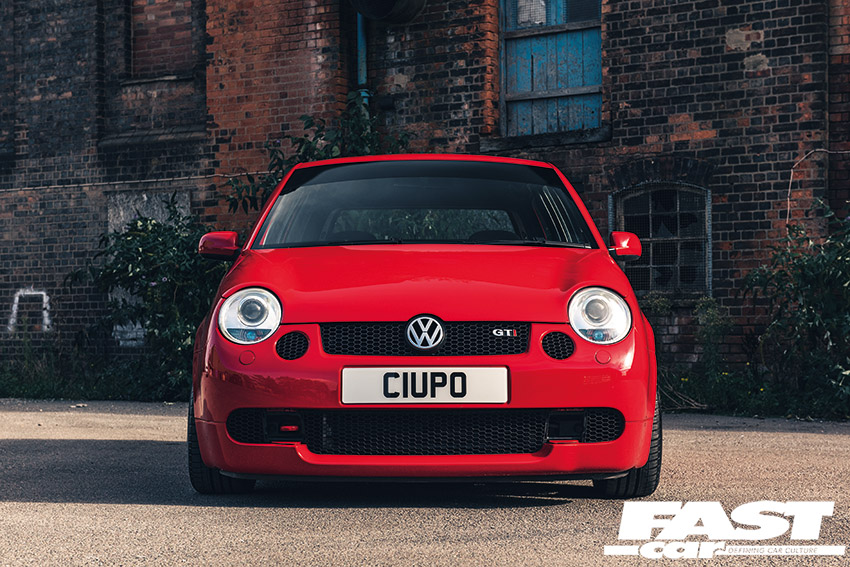
By comparison, the VW Lupo GTI felt like a hedonistic throwback to a simpler time, with its three pedals, four naturally aspirated cylinders and 125 eager horsepower, all tucked in behind that somehow-familiar quad-lamp ‘face’. And there was more to it than just numbers.
This was a Volkswagen born out of the same era of unconstrained engineering fascination as the Phaeton, Passat W8 and hyper-efficient Lupo 3L. Sure the Lupo was the smallest model in the range, but the development budget left room for an aluminium bonnet, doors and wings to nibble the kerb weight down to 978kg and (unlike the mechanically similar Polo GTI) the Golf engine block enabled it to use the stronger 02 transmissions – late versions had six gears, which is more than some Mk4 Golf GTIs. Future classic status was baked in at the factory, and it registered on Clayton Jones’s automotive radar too.
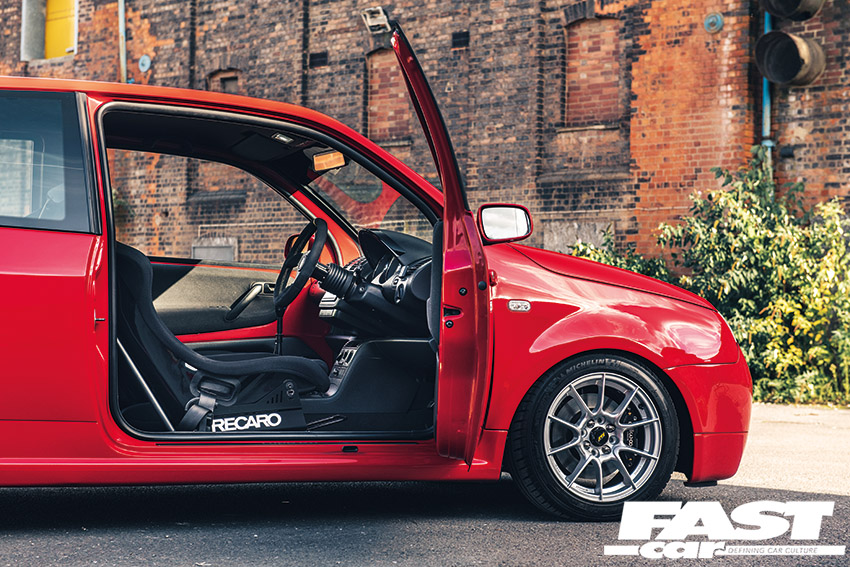
“I’ve always liked rare and unique cars, and I love driving, but originally I went down the ‘stance’ show car route with this one,” he tells us, hinting at a hidden part of his nine-year ownership. “Back then my mates were all into shows, so I had it low on some coilovers and some OZ Turbines – I don’t like anything over the top. Then I went to an evening session at Snetterton five years ago, and realised track days were way more fun. I must have done at least 50 track days now, and everything I’ve done to the car in the meantime has made it a better car.”
That change of vision is only one part of the tangent the modified VW Lupo GTI has taken him on. Clayton picked up a love of performance cars from his Dad before focusing in on Volkswagens when, as an impressionable teenager, his brother came home with a Mk5 R32. So instead of setting out on Lupo ownership with ambitions to explore the GTI’s full performance potential, his second car was destined to be an affordable stop gap while young driver insurance kept his own R32 out of reach. It was a step in the right direction, not the end destination.
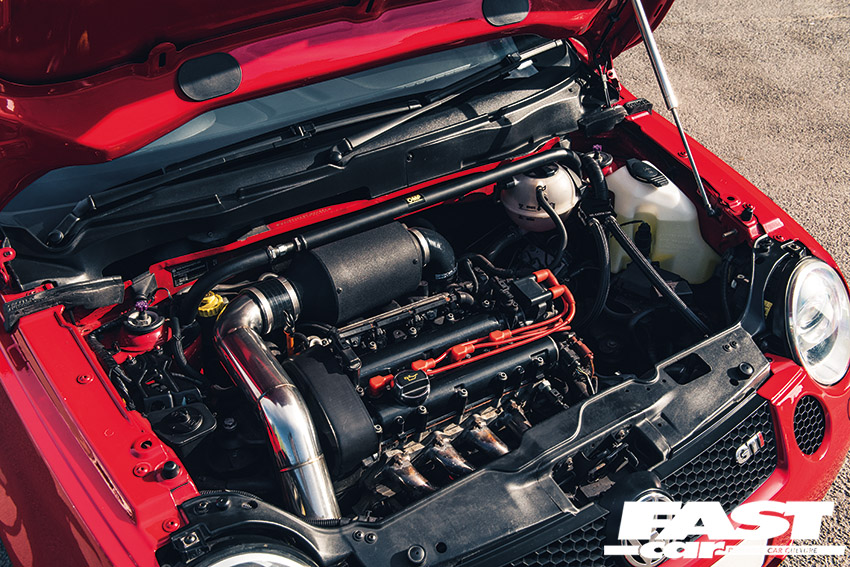
Temporary though it was meant to be, pre-purchase research dissolved any chance of compromising on spec. Even with cash waiting, it took almost a year to track down a well-maintained GTI with all the boxes ticked; six gears, no sunroof and bodywork in anything other than the all-too-common Reflex Silver. And even that level of commitment didn’t spare him from early-days ownership headaches.
“This car popped up in Birmingham, with 64,000 miles on the clock, a full Volkswagen service history – it was literally in the dealer the day before I picked it up – and the bloke selling it worked for the police doing forensics. We took it for an hour test drive, then I drove it two hours home, and the engine blew up five minutes from my doorstep. You can imagine how terrible that felt, after saving for years to get it,” he recalls.
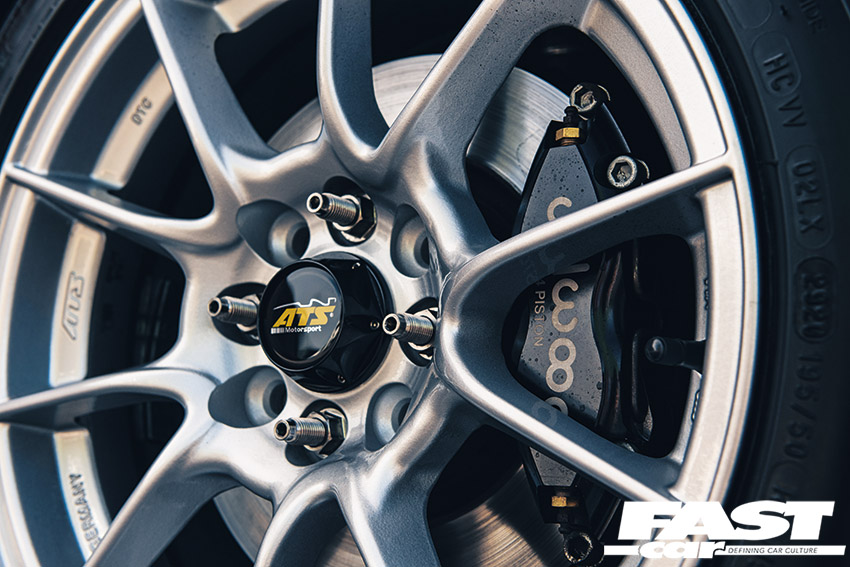
“At the time I just wanted to get it back on the road, so I found another engine with similar mileage on eBay, got the seller to send me a video of it running and bought that instead. It was good for two or three years until the piston rings started to fail, which is really common on them. Because the exhaust is in the middle and points up, and the back of the car is so flat, it got covered in oil. It’s been good ever since, though.”
The silver lining of that unplanned expense was having one less thing to worry about as the Lupo’s focus shifted to track work. Snetterton’s taster session was short but informative; the GTI had lots in its favour, but the stance-focused chassis upgrades, road tyres and factory brakes were blunting that potential. So Clayton wasted no time alleviating the weakest points.
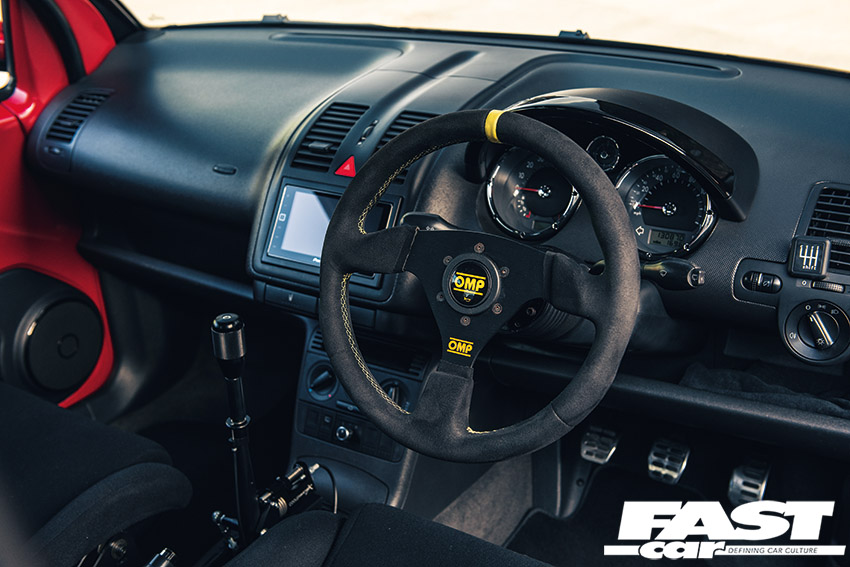
By the time it returned to the paddocks for its second outing, the modified VW Lupo GTI had gained much-needed adjustability from a set of BC Racing coilovers, while the Whiteline rear anti-roll bar and Yokohama A08Rs had started to extend the limits of its grip. Every track session and evening drive that followed had turned into a learning opportunity, progressively more focused on finding the tiniest of wrinkles in the standard hardware, then ironing them out.
The result is a much leaner, keener chassis setup than its already generous factory spec. Fully adjustable KW V2 coilovers, corner-weighted at Spires Tuning and paired with shims to dial in extra toe in and camber at the otherwise fixed-geometry rear axle, mean it’ll turn in and hang on with organ-churning aggression on track.
With little weight to rein in, and an upsized 280mm brake setup with four-piston Wilwood calipers up front, it can also out-brake most other cars if needed. Clayton even keeps four sets of motorsport-spec ultra-lightweight wheels in waiting, with rubber to suit road or track use, though it’s usually found on the 15″ ATS DTCs and Michelin Pilot Sport 3 pictured here. After all, power is nothing if you can’t put it down.

Ironically, despite all the high-spec hardware on board, it’s the standard parts that have thrown the biggest spanners into the works. “It’s reached a crossover point, where it’s not in Classic Parts, and nothing’s in Volkswagen dealers at the moment. That’s been the biggest hiccup so far – everything I ask for is obsolete, and it’s a pain in the ass,” he explains.
“A while back, I got it up in the air, took the wheels off and decided the whole lot was getting polybushed, with new ball joints, track rod ends…everything. I thought it would be off the road for a few weeks, but the ball joints were on back order and it took seven months before I got them – they are longer on the GTI than on other Lupos. So it was just sitting there for months, and I couldn’t put the old ones back on because I’d binned them. I just wanted to get out and drive it.”
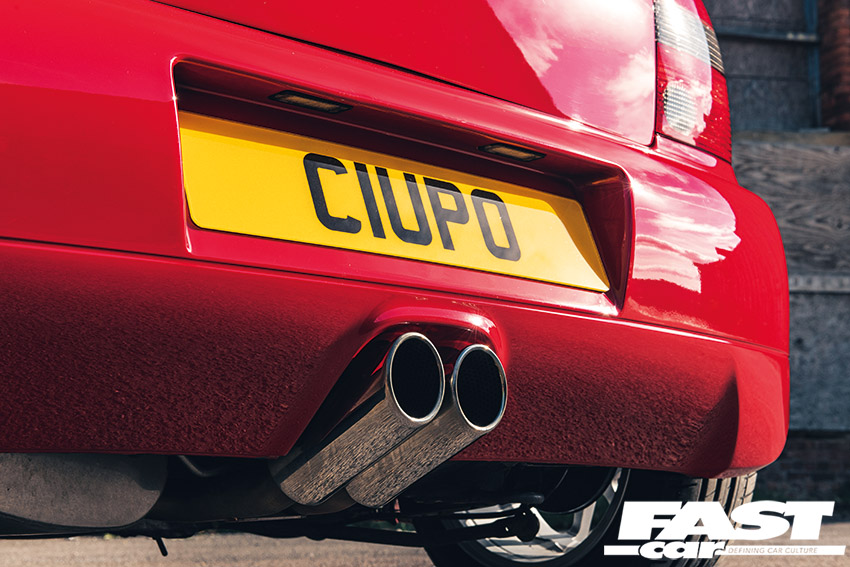
The more competitive the modified VW Lupo GTI became on track, the more it began highlighting a need to fine-tune the rest of the experience, and the cabin is more obviously re-worked than the subtle exterior changes give away. Its Coolerworx short-shifter and 80mm steering column extension bring the important controls closer to Clayton while he’s harnessed in place, and the rim of the wheel is trimmed in grippier alcantara too.
Beneath the dashboard, the wider throttle pedal enables easier heel-and-toe action on track, while the rear seats became nothing but excess weight once the harness bar went in. Despite already spending money on more heavily bolstered front seats, even these failed to make the grade once the Lupo GTI was ferociously clawing away at faster lap times. It’s the sort of detail occasional track use can miss.
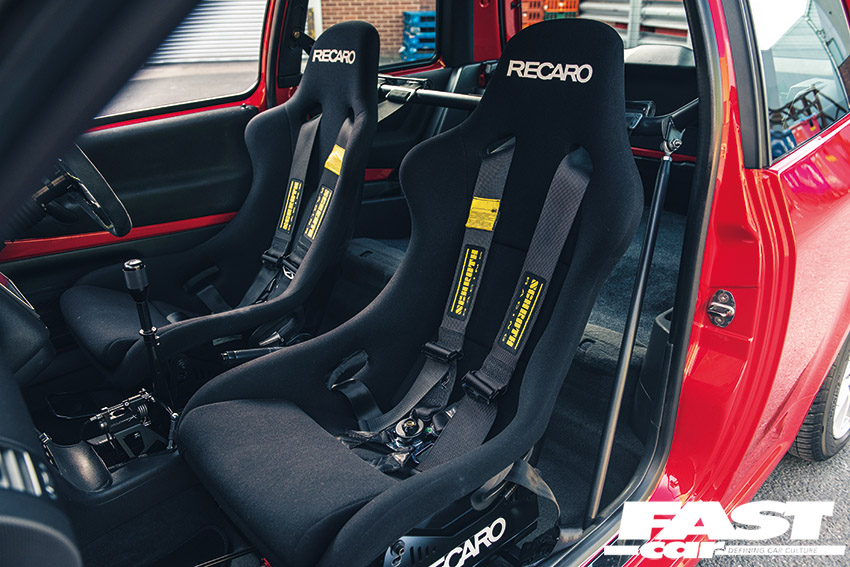
“I had Corsa VXR Recaros for a while, and they looked cool but I wasn’t being supported enough on track,” says Clayton. “My arms would be aching at the end of the day, because I was hanging onto the steering wheel through corners. The Recaro Pole Positions helped massively – they are half the weight, and it’s much more comfortable, because you can concentrate on driving rather than trying to hang on.”
Of course, learning curves don’t come much steeper than the Nürburgring, and its unforgiving mix of climbs, corners and fast stretches added a few more lines to the wish list. Extra power takes a little more persuasion when you’re starting with a small, naturally aspirated engine but, with the hands-on guidance of classic car mechanic and Lupo GTI owner Sully, the twin-cam packs a useful serving of extra pep to go with the chassis upgrades.
The empty spotlight apertures – similar to the factory-built Cup Cars – are a hint that not everything is as Volkswagen intended, flowing air into an upgraded cooling pack and cold air feed to the fully-enclosed Sprogley Motorsport airbox at the back of the bay. Fast road Piper cams with a ported and polished head and tubular manifold help liberate some extra performance towards the top of the rev range, paired with a lightened flywheel and bespoke Chipwizards map, while the Quaife limited-slip differential ensures none of that investment goes to waste.
Already more than worthy of the GTI badge in factory tune, the modified VW Lupo GTI now puts out 169.9bhp – not far off the stats of the most potent Mk4 Golf GTI but, at 920kg, this has a 25% weight advantage in its favour. Despite Clayton opting to keep the carpets, alcantara door cards and adding a Pioneer head unit, it’s still a suitcase lighter than even the most basic Lupo in the line-up. Who says you can’t have it all?
“If you bought a Lupo GTI, put a set of coilovers, sticky rubber and better brakes on it, then you’d have good fun with it out of the box,” he tells us. “However, on a track day you’d probably be the slowest car there, at least in a straight line. Since the power upgrades, mine is pretty much neck-and-neck with Clio 182 and 200s, that sort of stuff. But you can still extract all that power on the road without braking speed limits, and just enjoy it.”

Now, he says, it’s just a case of exploring what it’s capable of. Ten Nurburging visits and more than 70 laps since its first pass through the Nordscheife’s toll gates, and Clayton’s 8-minute, 28-second personal best from bridge to gantry can easily keep pace with the latest hot hatches, and there’s more to come. At least, there will be once it’s back on the road. Since our shoot, it’s spun one of the factory bearings six laps into a private track day at the Nürburgring, and the immediate priority is restoring the engine back to good health.
Frustrating? Sure, but it also comes with the territory. “The original bearings had done 134,000 miles, probably 20,000 on track, and they weren’t really designed for that,” Clayton shrugs. “I’ve been thinking about forged internals, but that’s getting on for £2,500 and we’re saving for a house at the moment, so I’ll rebuild it as standard for now. If it does another 50,000 miles, then I really can’t complain too much.”
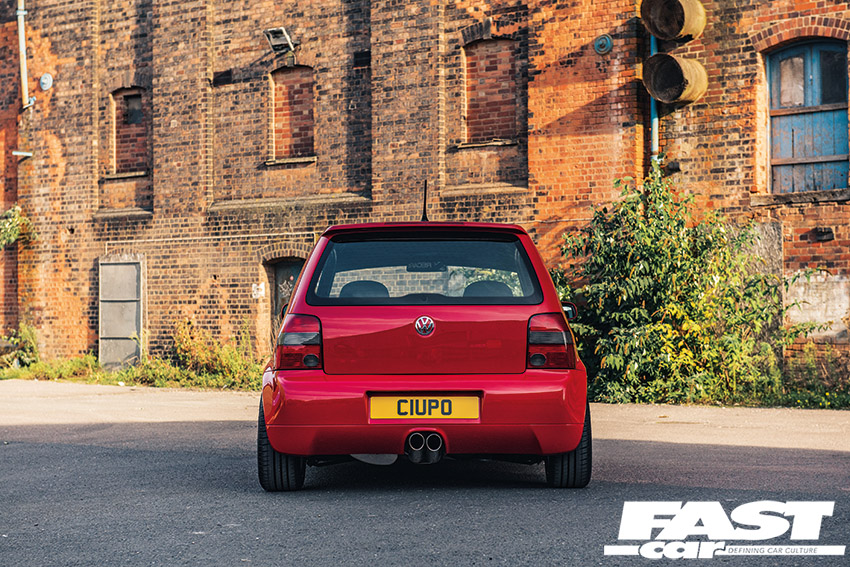
One thing it won’t do is turn this tangent around. While the modified VW Lupo GTI gets some downtime, Clayton has ordered 3D-printed pods to slot oil temperature and pressure gauges into the factory air vent slots, which means he can keep an eye on the important information once it’s doing its thing. And although post-mortgage plans include buying another track car, the Lupo hasn’t outstayed its welcome yet.
“After Snetterton, I remember umming and ahhing about whether to just buy a track car, but I’m glad I went down this route because it surprises everyone – on road and track. I’ve learned a lot, I’ve done the majority of the work on it, and I’ve got to the point where it’s pretty much bang on. It turns out I prefer it to an R32 anyway,” he laughs.
Perhaps that’s why the Mk1’s legacy is just as relevant today. For all the complexity and technology that’s found its way into subsequent generations, there’s a lot to be said for the simplicity of low weight, quick responses and a lively naturally aspirated engine. But, in Volkswagen terms at least, you’ll still never find a closer re-interpretation of that original formula than the Lupo GTI.
Tech Spec: Modified VW Lupo GTI
Engine:
1598cc, four-cylinder, 16-valve petrol, ported and polished head, Piper 270 cams, Custom stainless steel cold air feed, Sprogley Motorsport intake, 4-2-1 stainless manifold and de-cat, Kam Racing exhaust system, Chipwizards engine map, Custom engine mount, aluminium radiator, oil cooler, rebuilt 02U six-speed gearbox, Coolerworx short shifter, Quaife limited-slip differential, Epytec Lightened flywheel (2.9kg)
Chassis:
KW V2 Coilovers, Whiteline rear anti roll bar, OMP upper strut brace, polyurethane or new OEM bushes throughout, Spires Tuning geometry setup. Wilwood four-piston calipers, 280mm Brembo HC discs, Ferodo DS1.11 pads (front), Brembo HC discs and Ferodo DS2500 pads (rear), HEL braided brake lines, Motul RBF 660 fluid, 15×7 ATS DTC wheels with 195/50 Michelin Pilot Sport 3 tyres (road), 15×7 OZ Ultraleggera with 195/50 Nankang AR1 tyres (track), PSDesigns titanium stud kit
Exterior:
Spotlights removed, de-badged tailgate
Interior:
Recaro Pole Position seats, Schroth Profi six-point harnesses, Blox harness bar, OMP Targa steering wheel retrimmed in Alcantara by Royal Steering Wheels, B-G Racing 80mm steering wheel spacer, Heel & Toe accelerator pedal extension, rear seats removed, powder fire extinguisher. Pioneer double-din head unit

